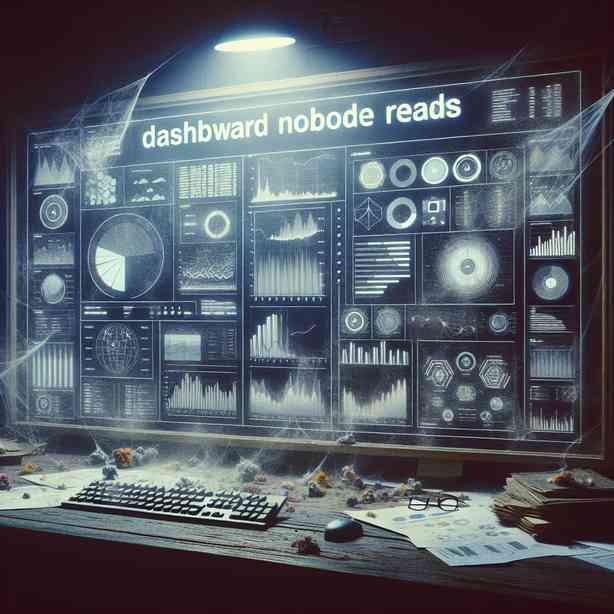
In today’s data-driven world, dashboards have become an essential tool for businesses seeking to make informed decisions based on real-time information. However, despite the potential of these powerful tools, many organizations struggle with a pressing issue—most dashboards go unread. This phenomenon raises critical questions about the design, functionality, and usability of dashboards.
At their core, dashboards are designed to provide a quick overview of key performance indicators (KPIs) and metrics that are crucial for understanding business performance. They consolidate vast amounts of data into visual representations that can highlight trends, patterns, and anomalies. Nevertheless, when dashboards are poorly designed or fail to meet the specific needs of their users, they often end up collecting digital dust, untapped and unused.
One primary reason dashboards remain unread is their overwhelming complexity. In an attempt to provide as much information as possible, many designs become cluttered with charts, graphs, and data points that do little to tell a cohesive story. Users may find themselves overwhelmed by the sheer volume of data presented to them, leading to disengagement and, ultimately, abandonment of the tool. To counter this, it is vital to prioritize simplicity and clarity in dashboard design. A well-crafted dashboard should focus on the most relevant information, using concise visualizations that enable users to quickly grasp insights without being bogged down by unnecessary details.
Furthermore, the customization of dashboards plays a significant role in their utilization. Different stakeholders within an organization have varying needs and perspectives, which means that a one-size-fits-all approach is unlikely to yield effective results. For example, a sales manager may be more interested in monthly sales trends and client acquisition rates, while a marketing director might focus on engagement metrics and campaign performance. By tailoring dashboards to specific user roles, organizations can ensure that individuals are presented with the information that matters most to them, thereby increasing the likelihood of engagement and adoption.
Another critical aspect of ensuring that dashboards are utilized is training and support. Even the most elegantly designed dashboard will go unread if users are not adequately trained on how to interpret and act on the data provided. Organizations should invest in training sessions that help employees understand the significance of the metrics displayed and how to use the dashboard to drive decision-making. Ongoing support and resources can further boost users’ confidence in navigating the dashboard, facilitating a more profound connection with the tool.
Moreover, fostering a culture of data-driven decision-making within an organization can significantly impact the readership of dashboards. When leaders emphasize the importance of data in guiding strategic choices, employees are more likely to seek out and utilize dashboards as tools for improving performance. This culture can be cultivated by encouraging open discussions about data across all levels of the organization, celebrating wins that result from data-driven insights and emphasizing continuous learning.
It is also essential to regularly revisit and update dashboards to keep them relevant. As business needs evolve, the information requirements of stakeholders may change. Regularly soliciting feedback from users about what data points they find valuable or what additional information they wish to see can help organizations refine their dashboards accordingly. This iterative process ensures that dashboards remain dynamic and adaptable, thereby encouraging more active usage.
In conclusion, while dashboards hold the potential to transform data into actionable insights, many remain unread due to issues of complexity, lack of customization, insufficient training, and inadequate fostering of a data-driven culture. By addressing these challenges head-on, organizations can enhance the readability and functionality of their dashboards. A focus on simplicity, user-centered design, targeted training, and cultural shifts toward data utilization can significantly uplift the value and engagement levels associated with dashboards. Ultimately, ensuring that dashboards are read and used can drive informed decision-making, unlock opportunities for growth, and help organizations navigate the complexities of the modern business landscape effectively. By evolving dashboards beyond simple reporting tools into integral components of an organization’s decision-making processes, businesses can cultivate a more engaged, data-savvy workforce that leverages insights to propel success.


